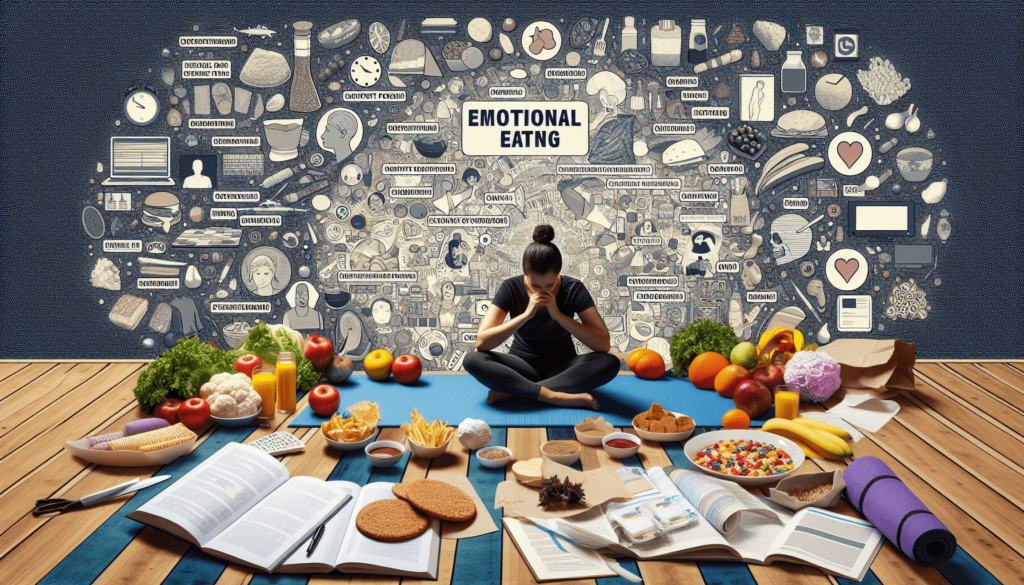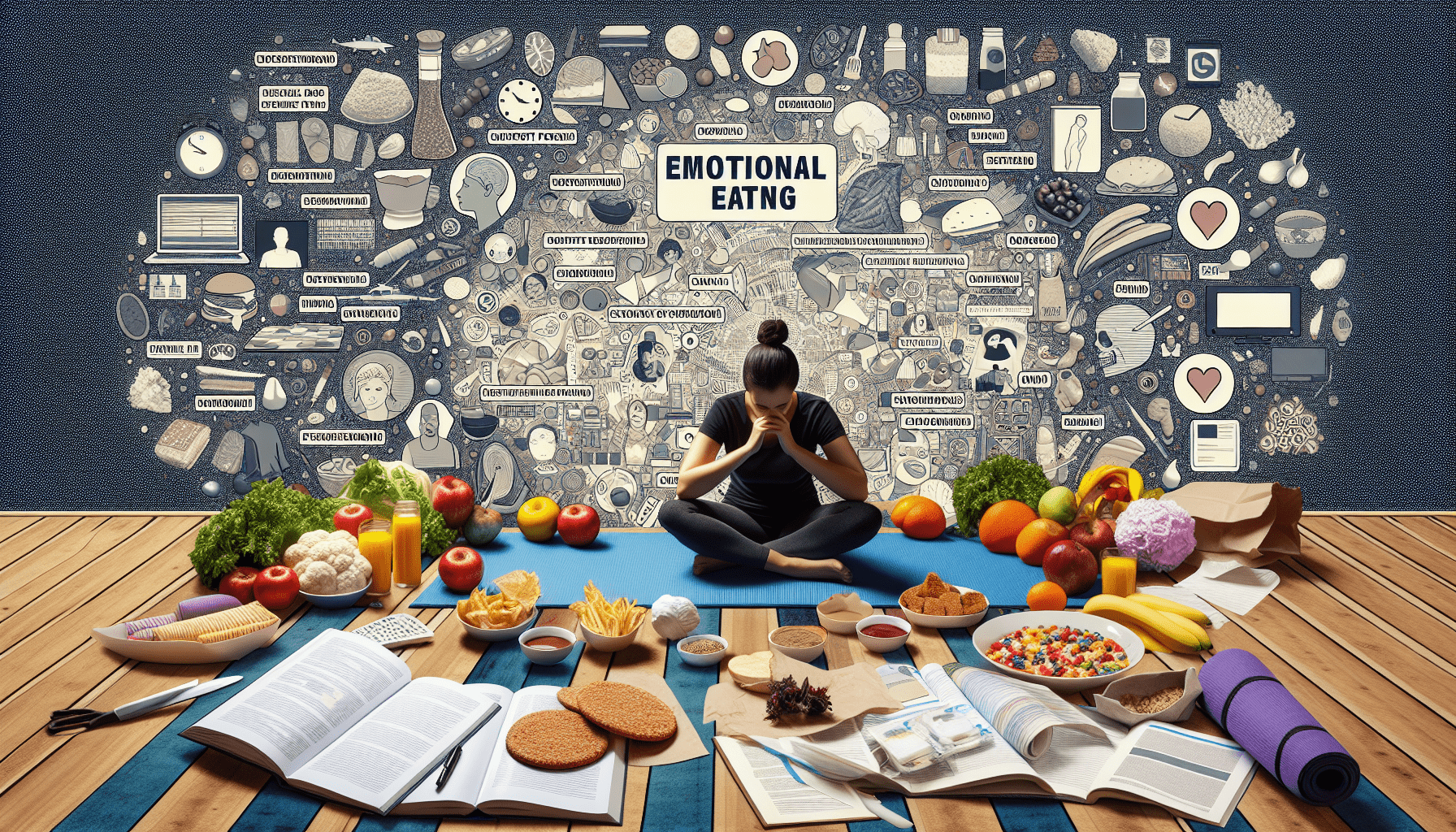Are you aware of how your emotions may affect your eating habits? It’s time to uncover your emotional eating patterns and gain insight into your relationship with food. Take our engaging and eye-opening emotional eating quiz and discover why you reach for that tub of ice cream after a tough day, or why stress causes you to seek solace in unhealthy snacks. With a better understanding of your own emotional eating patterns, you can start taking steps towards a healthier relationship with food and your emotions. Get ready to embark on a journey of self-discovery!

This image is property of images.unsplash.com.
Understanding Emotional Eating
Emotional eating is a common phenomenon that many people experience at some point in their lives. It refers to the act of eating in response to emotions rather than physical hunger. While it is normal to occasionally turn to food for comfort, emotional eating can become a problem when it becomes a habit and is used as a primary coping mechanism.
Defining emotional eating
Emotional eating can be defined as the tendency to consume food as a way to cope with or soothe negative emotions, such as stress, boredom, loneliness, sadness, or anger. It is often characterized by mindless eating, where individuals may eat quickly and without paying attention to their bodies’ hunger and fullness cues. Emotional eating typically involves a craving for specific foods, often high in sugar, fat, or salt, which are commonly associated with comfort and pleasure.
Causes of emotional eating
There are various factors that can contribute to emotional eating. Understanding these causes can help individuals gain insight into their own patterns and develop strategies to manage emotional eating effectively. Some common causes of emotional eating include:
-
Stress: When faced with stressful situations, some people turn to food as a means to seek temporary relief and comfort.
-
Boredom: Feeling bored can lead to mindless snacking or overeating as a way to fill a void or entertain oneself.
-
Loneliness: When feeling lonely or isolated, individuals may turn to food as a source of companionship or comfort.
-
Sadness: Food can often provide a temporary distraction from sadness or grief and can be used as a coping mechanism to numb negative emotions.
-
Anger: Some individuals may turn to food as a way to suppress or escape feelings of anger or frustration.
Understanding the root causes of emotional eating is the first step towards overcoming this pattern and developing healthier coping mechanisms.
Recognizing Emotional Hunger vs. Physical Hunger
Differentiating between emotional hunger and physical hunger is crucial in managing emotional eating effectively. By being aware of the signs and cues of each type of hunger, you can make more informed choices when it comes to eating.
Differentiating between emotional and physical hunger
Physical hunger is the body’s natural physiological response to a need for nourishment. It is often gradual and may be accompanied by physical symptoms such as a growling stomach, low energy levels, and difficulty concentrating. Emotional hunger, on the other hand, arises from an emotional need rather than a physiological one. It is typically sudden and intense, with an urgent desire for specific comfort foods.
Signs of emotional hunger
Emotional hunger often manifests differently from physical hunger. Here are some common signs to look out for:
-
Sudden cravings: Emotional hunger tends to be specific, craving certain types of food, especially those high in sugar, fat, or salt.
-
Triggered by emotions: Emotional hunger usually occurs in response to a particular emotion, such as stress, sadness, or boredom.
-
Mindless eating: Eating without paying attention to hunger and fullness cues is a key characteristic of emotional hunger.
Signs of physical hunger
Physical hunger, on the other hand, has distinct signs that indicate the body’s genuine need for sustenance. These signs include:
-
Gradual onset: Physical hunger develops slowly over time and increases in intensity.
-
Physical symptoms: Physical hunger is often accompanied by physical sensations, such as stomach growling, lightheadedness, or fatigue.
-
Flexible food choices: When physically hungry, you’re likely to be open to a variety of foods rather than fixating on specific comfort items.
By learning to recognize the differences between emotional and physical hunger, you can begin to develop more mindful and conscious eating habits.
Common Emotional Triggers for Emotional Eating
Emotional eating can be triggered by various emotional states. Understanding these common triggers can help individuals develop strategies to manage emotional eating effectively.
Stress
Stress is a significant trigger for emotional eating. When facing high levels of stress, many people turn to food as a way to seek temporary relief and comfort. Stress can disrupt our normal eating patterns, leading to mindless snacking or overeating.
Boredom
Feelings of boredom can also contribute to emotional eating. When bored, individuals may turn to food as a means to fill a void or entertain themselves. This mindless snacking can quickly become a habit, making it challenging to break free from the cycle of emotional eating.
Loneliness
Loneliness or feelings of isolation can be strong emotional triggers for turning to food for comfort. Food can temporarily alleviate feelings of loneliness and act as a source of companionship. Unfortunately, relying on food for companionship can contribute to unhealthy eating habits and hinder personal growth and development.
Sadness
Sadness and grief can greatly influence our eating behaviors. Food can provide a temporary distraction from negative emotions, offering a sense of comfort and pleasure. Turning to food during times of sadness may be a way to numb the pain or seek solace.
Anger
Feelings of anger or frustration can also contribute to emotional eating. Food may be used as a way to suppress or escape these intense emotions. Individuals may find themselves reaching for high-calorie comfort foods as a way to soothe their anger temporarily.
By identifying these common emotional triggers, individuals can begin to develop healthier alternatives to cope with and manage their emotions effectively.
Identifying Personal Emotional Eating Patterns
Identifying personal emotional eating patterns is a crucial step towards managing emotional eating. By keeping a food and mood journal, noticing emotional cues and triggers, and identifying the specific emotions associated with overeating, individuals can gain valuable insights into their behaviors and make positive changes.
Keeping a food and mood journal
Keeping a food and mood journal involves recording what you eat and how you feel before, during, and after each meal or snack. This practice allows you to identify patterns between your emotions and eating behaviors. By tracking your food choices, portion sizes, and emotional states, you can gain a better understanding of your triggers and make conscious choices to address emotional eating.
Noticing emotional cues and triggers
Being aware of the cues and triggers that prompt emotional eating is essential for breaking the cycle. Pay attention to the situations, events, or emotions that lead to episodes of overeating. By recognizing these triggers, you can implement healthier coping mechanisms to address the root cause of emotional eating.
Identifying specific emotions associated with overeating
Emotional eating is often driven by specific emotions such as stress, boredom, loneliness, sadness, or anger. By identifying the emotions tied to your overeating episodes, you can develop strategies to address these emotions directly. Engaging in activities or seeking support that specifically targets these emotions can help break the cycle of emotional eating.

This image is property of images.unsplash.com.
Managing Emotional Eating
Managing emotional eating involves developing alternative coping mechanisms, seeking support from loved ones or professionals, and practicing mindful eating.
Developing alternative coping mechanisms
One of the most effective ways to manage emotional eating is to develop alternative coping mechanisms. Find healthy ways to cope with stress, boredom, loneliness, sadness, or anger, such as exercising, practicing deep breathing techniques, engaging in hobbies, or seeking emotional support from loved ones. Finding activities that bring you joy and fulfillment can be instrumental in redirecting the urge to turn to food for emotional comfort.
Seeking support from loved ones or professionals
Support from loved ones or professionals can play a crucial role in managing emotional eating. Reach out to friends, family, or support groups for emotional support and guidance. Professional help, such as therapy or counseling, can provide valuable resources and strategies to address the underlying emotions contributing to emotional eating.
Practicing mindful eating
Practicing mindful eating involves maintaining awareness and being fully present when eating. Slow down, savor each bite, and pay attention to hunger and fullness cues. By cultivating a non-judgmental attitude towards food and eating, you can develop a healthier relationship with food and break free from the cycle of emotional eating.
Creating a Healthy Relationship with Food
Creating a healthy relationship with food is vital for long-term success in managing emotional eating. Embracing all food groups and balanced meals, fostering a positive body image, and cultivating self-compassion are key components of developing a healthy relationship with food.
Embracing all food groups and balanced meals
Restrictive diets and labeling certain foods as “good” or “bad” can contribute to emotional eating by creating a negative relationship with food. Instead, focus on embracing all food groups and promoting balanced meals that provide proper nourishment. Incorporating a variety of fruits, vegetables, whole grains, lean proteins, and healthy fats into your diet ensures a well-rounded and satisfying eating experience.
Fostering a positive body image
Cultivating a positive body image is essential in reducing the likelihood of turning to food for emotional comfort. Remember that every body is unique and deserves love and respect. Focus on self-care, positive affirmations, and engaging in activities that make you feel good about yourself. Accept and appreciate your body at every stage, striving for overall health and well-being rather than unrealistic ideals.
Cultivating self-compassion
Practicing self-compassion is crucial in developing a healthy relationship with food. Understand that emotional eating is a common struggle and that you are not alone. Be kind to yourself when facing setbacks or challenges and avoid self-criticism. Treat yourself with the same kindness, understanding, and forgiveness that you would offer a close friend.

This image is property of images.unsplash.com.
Setting Realistic Goals for Behavior Change
Setting realistic goals is essential for behavior change and long-term success in managing emotional eating. Using the SMART goal-setting framework, breaking the cycle of emotional eating, and rewarding small victories can help individuals stay motivated and focused on their journey.
Establishing SMART goals
SMART goals are Specific, Measurable, Achievable, Relevant, and Time-bound. When setting goals, be clear about what you want to achieve, make them measurable and attainable, ensure they are relevant to your emotional eating patterns, and set a specific timeline. For example, a SMART goal could be to reduce emotional eating episodes to once a week within the next three months.
Breaking the cycle of emotional eating
Breaking the cycle of emotional eating requires a conscious effort to interrupt the automatic response of turning to food for emotional comfort. Implement strategies such as engaging in alternative activities, emotional regulation techniques, or seeking support when triggered. By gradually replacing emotional eating with healthier coping mechanisms, you can break the cycle and establish new patterns of behavior.
Rewarding small victories
Celebrate and reward yourself for every small victory along the way. Recognize your progress, no matter how small, and acknowledge the effort you are putting into managing emotional eating. Treat yourself to non-food rewards, such as a new book, a relaxing bath, or engaging in a favorite hobby. Celebrating milestones reinforces positive behavior and motivates you to continue on your journey.
Seeking Professional Help for Emotional Eating
While self-help strategies can be effective, sometimes seeking professional help is necessary for managing emotional eating. Understanding when to consider therapy or counseling, the different types of therapy available, and overcoming barriers to seeking help is essential for reclaiming control over emotional eating.
When to consider therapy or counseling
Consider seeking therapy or counseling if emotional eating is significantly impacting your physical health, emotional well-being, or overall quality of life. If attempts to manage emotional eating on your own have been unsuccessful or if you feel overwhelmed and unable to break free from the cycle, reaching out to a professional can provide the necessary guidance and support.
Types of therapy for emotional eating
Therapy options for emotional eating may include cognitive-behavioral therapy (CBT), dialectical behavior therapy (DBT), or acceptance and commitment therapy (ACT). These therapeutic approaches can help individuals explore and address the underlying emotions, develop healthier coping mechanisms, and create sustainable behavior change.
Overcoming barriers to seeking help
Seeking help for emotional eating can be challenging due to various barriers, such as stigma, financial constraints, or lack of awareness. Overcoming these barriers involves reaching out to supportive individuals in your life, seeking low-cost or community-based therapy options, and educating yourself about the benefits of therapy. Remember, seeking help is a brave and proactive step towards reclaiming control over your emotional eating patterns.

Preventing Emotional Eating Triggers
Preventing emotional eating triggers involves creating a stress management plan, engaging in enjoyable activities, and building a support network.
Creating a stress management plan
Developing a stress management plan is essential for minimizing emotional eating triggers. Identify stressors in your life and implement healthy coping mechanisms to manage stress effectively. This may include engaging in physical activity, practicing relaxation techniques, seeking support from loved ones, or seeking professional help when needed. By addressing stress proactively, you can reduce the likelihood of turning to food for emotional comfort.
Engaging in enjoyable activities
Engaging in enjoyable activities can distract you from turning to food for emotional comfort. Find activities that bring you joy, such as spending time in nature, pursuing hobbies, reading a book, or listening to music. By incorporating enjoyable activities into your routine, you can fill the void often associated with emotional eating and redirect your focus towards positive experiences.
Building a support network
Building a support network is crucial in preventing emotional eating triggers. Surround yourself with individuals who understand and support your journey. Share your goals and challenges with trusted friends, family, or support groups. Having a strong support system can provide encouragement, accountability, and a safe space to discuss your emotions and experiences.
Maintaining Long-Term Success
Maintaining long-term success in managing emotional eating involves dealing with setbacks and relapses, continuing self-reflection and self-care, and celebrating milestones.
Dealing with setbacks and relapses
Setbacks and relapses are a normal part of the journey towards managing emotional eating. Instead of viewing them as failures, consider them as opportunities for growth and learning. Reflect on the reasons behind the setback, adjust your strategies if needed, and focus on getting back on track. Remember that progress is not always linear, and each setback brings valuable insights and lessons.
Continuing self-reflection and self-care
Continual self-reflection and self-care are vital for maintaining long-term success. Regularly check in with yourself, assess your emotional well-being, and make self-care practices a priority. Engage in activities that nurture your physical, mental, and emotional health. This may include practicing mindfulness, setting aside time for relaxation, engaging in regular physical activity, and establishing healthy sleep patterns.
Celebrating milestones
Celebrate your milestones along the way to acknowledge your progress and achievements. Recognize the positive changes you have made in managing emotional eating and reward yourself for reaching specific goals. Celebrations can provide a sense of motivation, reinforce positive behavior, and remind you of the progress you have made on your journey towards a healthier relationship with food.
In conclusion, understanding emotional eating, recognizing the differences between emotional and physical hunger, identifying individual triggers and patterns, and implementing effective strategies can help individuals manage their emotional eating effectively. By creating a healthy relationship with food, setting realistic goals, seeking professional help when needed, and maintaining long-term self-care practices, individuals can reclaim control over their emotional eating patterns and live a more balanced and fulfilling life. Remember, you are not alone, and with patience and perseverance, you can overcome emotional eating and develop healthier coping mechanisms.


